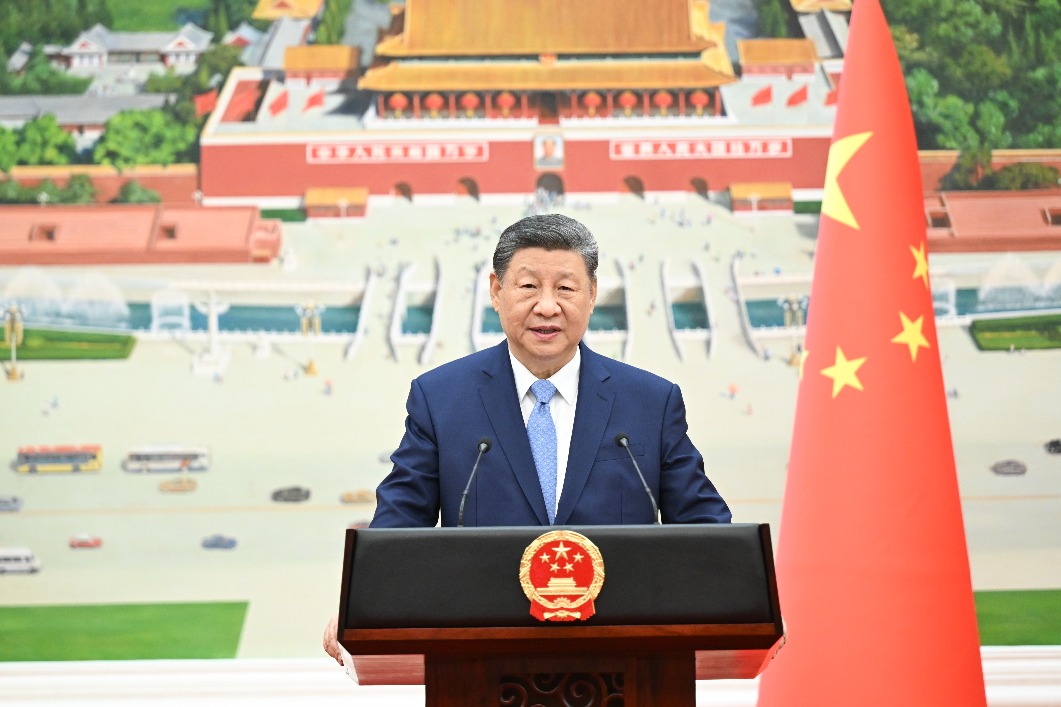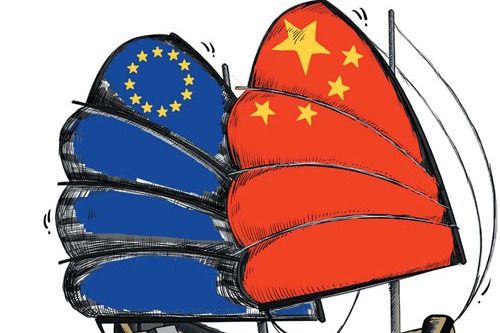Trade resilient to new mini-outbreaks


Editor's Note: The Delta variant, given it is more contagious, could severely disrupt human activity and therefore its spread to 48 cities in 18 provinces of the Chinese mainland poses bigger risk to the economy. Can the stricter anti-pandemic measures implemented by the central and local governments to curb the resurgence of the novel coronavirus to ensure normal human and economic activity? Three experts share their views on the issue with China Daily:
The fast spread of the Delta variant, the most contagious variant of the novel coronavirus, in many parts of the world poses a new threat to not only people's safety but also global economic recovery.
In China, a confirmed case of the Delta variant was detected at Nanjing Lukou International Airport on July 20, and since then it has spread to 48 cities, prompting Goldman Sachs to revise down its GDP growth forecast for the country from 8.6 percent to 8.3 percent for 2021, as the new lockdowns and strict anti-pandemic measures are likely to hinder economic activities.
The International Monetary Fund, however, doesn't see the new COVID-19 outbreak having much impact on the global economy. Its latest World Economic Outlook report, released on July 27, maintains its upbeat tone on global GDP growth both for 2021 and 2022. The report has not only maintained the WTO's global GDP growth forecast of 6.0 percent for 2021, unchanged from its April estimate, but also raised the growth forecast for 2022 by 0.5 percentage points to 4.9 percent.
China's export of goods has been rising since the beginning of the year, reaching $1,800.89 billion, up 35.2 percent year-on-year-and 29.3 percent compared with the same period of 2019. In July alone, the export volume reached $282.66 billion, 11.7 percentage points more than the monthly average in the first half of 2021.
The basic reason for the robust increase in exports is China's strong competitiveness and the sound global demand, especially because of the disruption in and uncertainties associated with the global supply chains, compared with China's effective and reliable export-oriented industries. Chinese exports to even the United States increased at a record rate, by 36.9 percent, in the first seven months of the year despite the administration continuing to impose high tariffs on Chinese goods.
In the worst-case scenario, the Delta variant will continue to spread across the world, prompting the authorities to implement new lockdowns and stricter anti-pandemic measures, which would disrupt economic activity and affect trade and logistics, and reduce demands.
In China, however, the spread of the Dealt variant is likely to be contained in a couple of months. Moreover, the impact of new outbreaks has not been much on China's leading export provinces along the east coast, except for Jiangsu province which is taking every possible measure to contain the spread of the Delta variant. Therefore, the impact on production, delivery and outbound shipping is likely to be limited.
However, in a pessimistic scenario of new lockdowns and economic setbacks in many parts of the world and with the virus spreading faster and wider, China's exports could suffer a blow.
Let us assume China's average monthly exports in the five remaining months of this year decline by 10 percent from the July level of $282.66 billion, to $254.4 billion. But even then China's exports for the whole of 2021 would be $3,072.89 billion, up 18.6 percent year-on-year-and 23.0 percent compared with 2019-exceeding the $3 trillion mark for the first time.
But we are confident that the situation is not likely to be that pessimistic because of three reasons.
First, the performance of global trade was much better than expected even in 2020 when the COVID-19 pandemic was at its peak. World Trade Organization data show the global goods trade volume in 2020 declined by 5.3 percent, much less than the 9.2 percent forecast. During the fourth quarter of 2020, it had already surpassed the level of the pre-pandemic fourth quarter of 2019. And the global trade barometer of the WTO on June 21 was at 109.7, compared with 88.1 a year ago, with sharp increases in export orders and air freights.
Hence, the WTO estimated that global goods trade would grow by 8.0 percent in 2021 and 4.0 percent in 2022.
Second, the keen demand for a number of major Chinese exports is unlikely to subdue soon. The exports of apparel, shoes, ceramics and lighting apparatuses increased by 32.9 percent, 35.9 percent, 34.5 percent and 46.4 percent respectively during the first seven months of 2021, while those of machinery and electronics products increased by 36.3 percent. Among them, the exports of auto parts increased by 119.8 percent, largely as a result of the chip shortage in the world market. And the exports of machinery, home electrical appliances, computers, mobile phone sets and IC rose by 28.3 percent, 38.3 percent, 24.1 percent, 25.6 percent and 31.1 percent respectively.
Third, the healthy demand for Chinese goods in the world's leading markets is likely to continue. According to the US Bureau of Economic Analysis, US goods imports in the first half of 2021 increased by 24.0 percent year-on-year from across the world, and 27.1 percent from China. Among the Asia-Pacific economies, cumulatively the largest goods supplier to the US, China's exports to the US increased by $48.98 billion, while exports from the rest of the region increased by $29.7 billion. As a result, the share of China's exports in the Asia-Pacific region increased from 49.0 percent a year ago to 51.3 percent.
Also, China's imports increased by 34.9 percent year-on-year during the first seven months of this year, almost at the same pace as its exports (up 35.2 percent). And since China's GDP is poised to grow by more than 8 percent this year, the demand for imports is expected to remain relatively strong.
While being cautiously optimistic about China's foreign trade amid a resurgence of infections in many parts of the world, China should closely follow the developments and changes in the global economy while guarding against new risks and preparing well for any eventualities, so as to achieve robust, sustainable trade growth.
The author is a standing council member and chief economist of China Association for International Trade, and a senior fellow at the Chongyang Institute for Financial Studies. The views don't necessarily reflect those of China Daily.
































